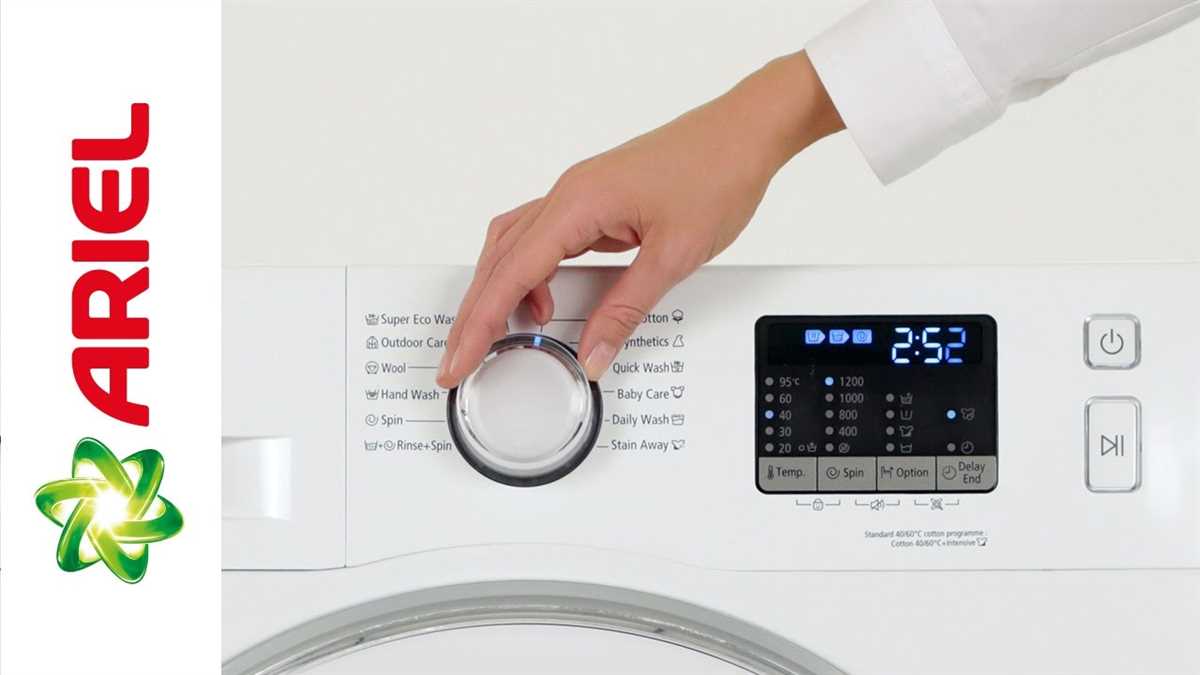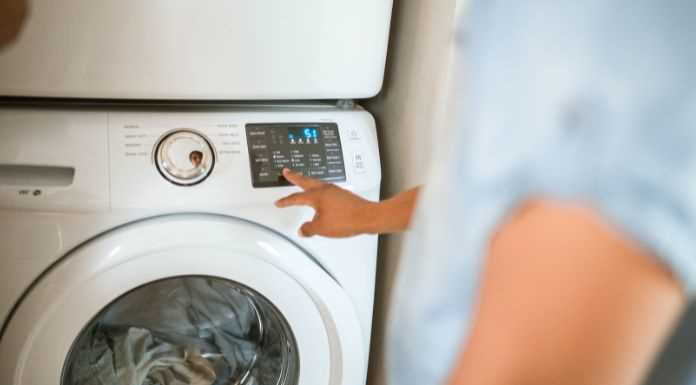




If you’re wondering how long a 60-degree wash usually takes, you’ve come to the right place. Many people opt for a 60-degree wash when they want to thoroughly clean their clothes and kill any bacteria or allergens. However, the duration of this wash cycle can vary depending on several factors.
The average time for a 60-degree wash is around 1 hour. This includes the time it takes for the machine to fill up with water, agitate the clothes, rinse them, and drain the water. However, some machines may take slightly longer or shorter than this depending on their specific settings and features.
It’s important to keep in mind that the duration of a 60-degree wash can also be influenced by the load size and the type of fabric being washed. Generally, larger loads or heavier fabrics may require more time to clean thoroughly. Additionally, some machines offer shorter or longer cycles for different types of clothing, so it’s worth checking your machine’s manual or settings for more specific information.
Overall, if you’re using a standard washing machine on a 60-degree wash, you can expect it to take around 1 hour. However, it’s always a good idea to check the specific instructions for your machine and adjust the settings accordingly for optimal results.
Remember to always follow the manufacturer’s guidelines for your machine and be mindful of any special requirements or recommendations for certain fabrics. By doing so, you can ensure that your clothes are properly cleaned and cared for during a 60-degree wash cycle.
The Duration of a 60-Degree Wash Cycle

When using a 60-degree wash cycle on your washing machine, it is important to consider the duration of the cycle. The duration of a 60-degree wash usually depends on various factors such as the specific washing machine model, the size and type of load, and the selected program or settings. However, on average, a 60-degree wash cycle tends to take around 1 to 2 hours.
The duration may vary slightly depending on the make and model of the washing machine. Some machines offer shorter or longer wash cycles, allowing you to customize the duration to fit your needs. It is always recommended to refer to the user manual or the control panel of your washing machine to get an accurate estimate of the duration for the 60-degree wash cycle.
Additionally, it is important to note that some washing machines may have additional features or settings that can affect the duration of the wash cycle. For example, a machine with a quick wash function may offer a shorter duration for a 60-degree wash cycle, while a machine with an eco-friendly option may have a longer duration to conserve energy.
During a 60-degree wash cycle, the washing machine heats the water to a high temperature of 60 degrees Celsius (140 degrees Fahrenheit). This higher temperature helps to effectively remove stains and kill bacteria from your laundry. It is recommended to use a 60-degree wash for heavily soiled items, such as bedding or towels, or for items that require extra sanitation, such as baby clothes or undergarments.
In conclusion, the duration of a 60-degree wash cycle can vary depending on the specific washing machine and settings chosen. However, on average, it typically takes around 1 to 2 hours. It is always best to refer to the user manual or the control panel of your machine for an accurate estimate and to take advantage of any additional features or settings that may impact the duration.
Factors That Influence the Length of a 60-Degree Wash
Several factors can influence the length of time it takes for a 60-degree wash cycle to complete. These factors include:
- Load Size: The amount of laundry being washed can impact the duration of the wash cycle. A larger load typically requires more time to ensure that all items are thoroughly cleaned.
- Soil Level: The level of dirt and stains on the clothes can affect the length of the wash cycle. Heavily soiled garments may require a longer wash time to effectively remove dirt and stains.
- Washing Machine Efficiency: The efficiency and capabilities of the washing machine itself can also impact the duration of the wash cycle. Higher-end machines often have shorter wash times due to advanced technology and features.
- Detergent and Additives: The type and amount of detergent and other laundry additives used can affect the length of the wash cycle. Some detergents are formulated to work more efficiently at specific temperatures, which can reduce the overall wash time.
- Program Selected: Different wash programs on the washing machine may have varying durations for a 60-degree wash. Some programs may have shorter cycles designed for lightly soiled items, while others may have longer cycles for heavily soiled or more delicate fabrics.
It’s important to note that the exact duration of a 60-degree wash can vary between different washing machine models and brands. Therefore, it’s recommended to consult the user manual or specifications of your specific washing machine for more accurate information on the duration of a 60-degree wash cycle.
Standard Time for a 60-Degree Wash
When running a 60-degree wash, the standard time it usually takes can vary depending on several factors, such as the type of washing machine and the specific wash program selected. However, in general, a 60-degree wash cycle tends to take a longer time compared to lower temperature washes.
Factors Affecting the Duration
The duration of a 60-degree wash can be influenced by several factors:
- Load Size: The amount of laundry being washed can affect the duration of the cycle. A larger load may require more time for the clothes to be thoroughly cleaned.
- Soil Level: If the clothes have heavy stains or are particularly dirty, the wash cycle might be extended to ensure the best cleaning results.
- Washing Machine Type: Different washing machine models may have varying wash times for a 60-degree cycle. Some machines may have pre-set programs that automatically adjust the duration based on the load and soil level.
Average Duration
On average, a 60-degree wash cycle can take anywhere from 1 hour to 2 hours. However, this is just an estimate, and the actual time can range from shorter to longer durations depending on the factors listed above.
| Washing Machine Model | Estimated Duration |
|---|---|
| Model A | 1 hour 30 minutes |
| Model B | 1 hour 45 minutes |
| Model C | 2 hours |
It’s important to check the specific instructions and settings of your washing machine to determine the exact duration for a 60-degree wash. Additionally, be mindful of any energy-saving or quick wash options that may affect the overall duration of the cycle.
Benefits of a 60-Degree Wash

- Kills bacteria and viruses: Washing laundry at a high temperature of 60 degrees Celsius can help kill bacteria, viruses, and other harmful microorganisms. This temperature is considered effective in sanitizing clothes and linens, making it ideal for heavily soiled items, underwear, towels, and bedding.
- Removes tough stains: Hot water can be effective in removing stubborn stains, such as grease, oil, dirt, and grime. The higher temperature helps to break down and dissolve these stains, resulting in cleaner and fresher-looking clothes.
- Reduces allergens: A 60-degree wash can help eliminate allergens, such as pollen, dust mites, and pet dander, from fabrics. This can be particularly beneficial for individuals with allergies or sensitivities, as it can help reduce symptoms and improve overall comfort.
- Increases hygiene: Washing laundry at a higher temperature can contribute to better hygiene standards. It can help prevent the spread of infections and reduce the risk of cross-contamination, especially for items that come into contact with bodily fluids or potentially contaminated substances.
- Preserves fabric quality: Despite the higher temperature, a 60-degree wash can still be gentle on fabrics when done in the appropriate cycle and with suitable detergent. This temperature can effectively remove dirt and stains without causing excessive damage or fading to most fabrics.
- Energy efficiency: Using a 60-degree wash can be more energy-efficient compared to higher temperature washes, such as 90 degrees. While still providing effective cleaning, a 60-degree wash consumes less energy, resulting in potential cost savings and reduced environmental impact.
- Suitable for certain items: A 60-degree wash is recommended for certain items that require thorough cleaning and disinfection, such as towels, bedding, underwear, and heavily soiled clothes. It can help maintain freshness, extend the lifespan of the items, and keep them in good condition.
Expert Tips on Reducing Washing Time
If you’re looking to reduce the time it takes to complete a 60-degree wash, there are several expert tips and tricks that can help. By following these recommendations, you can speed up the washing process without compromising the quality of your laundry.
Sort Your Laundry

Before starting the wash, take some time to sort your laundry properly. This includes separating whites from colors and grouping similar fabrics together, such as towels or delicate items. By doing this, you can wash loads with similar washing requirements together, resulting in shorter wash times.
Pre-Treat Stains
If you have heavily stained items, it’s a good idea to pre-treat them before putting them in the washing machine. This will help to remove the stains more effectively during the wash cycle, reducing the need for longer wash times. Use stain removers or pre-soaking techniques to target and treat the stains.
Select the Right Washing Machine Cycle
Most washing machines offer various cycles, so be sure to choose the appropriate one for your laundry. For moderately soiled items, a shorter cycle will suffice. Avoid using unnecessarily long cycles unless your laundry is heavily soiled. By selecting the right cycle, you can significantly reduce the washing time.
Use a Higher Spin Speed
Opt for a higher spin speed setting on your washing machine. A faster spin will remove more moisture from your laundry, resulting in shorter drying times. However, be mindful of the fabric care labels as some delicate items may require lower spin speeds to avoid damage.
Avoid Overloading the Machine
While it may be tempting to maximize the load size, overloading the washing machine can lead to longer wash times. Clothes need space to agitate and move around to get properly cleaned. Overloading can negatively impact the washing efficiency and prolong the cycle. Stick to the recommended load capacity for optimal results.
Consider Using Quick Wash Programs
If you have lightly soiled laundry or only a few items to wash, consider using the quick wash program on your washing machine. These programs are designed to complete a wash cycle in a shorter period of time, making them ideal for smaller loads or items that don’t require heavy cleaning.
By implementing these expert tips, you can reduce the duration of a 60-degree wash and get your laundry done more efficiently. Remember to always follow the manufacturer’s instructions and care labels for the best results.
FAQ
How long does a 60-degree wash usually take?
A 60-degree wash usually takes about 1.5 to 2 hours.
Is it necessary to do a 60-degree wash for every load?
No, it is not necessary to do a 60-degree wash for every load. It depends on the type of laundry and the level of dirtiness.
What are the benefits of doing a 60-degree wash?
Doing a 60-degree wash helps to kill bacteria, remove allergens, and thoroughly clean heavily soiled items such as bedding, towels, and sports clothes.
Can I use a lower temperature for certain fabrics?
Yes, certain fabrics may require a lower temperature wash to prevent damage. Always check the care label for washing instructions.
How can I reduce the time it takes for a 60-degree wash?
To reduce the time it takes for a 60-degree wash, you can pre-soak heavily soiled items, use a higher spin speed, and choose a shorter wash program if available.
How long does a 60-degree wash usually take?
A 60-degree wash usually takes around 1 hour and 30 minutes.
Is a 60-degree wash cycle suitable for all types of fabrics?
No, a 60-degree wash cycle is not suitable for all types of fabrics. It is generally best for whites and heavily soiled items. Delicate fabrics and colors may require a lower temperature.











